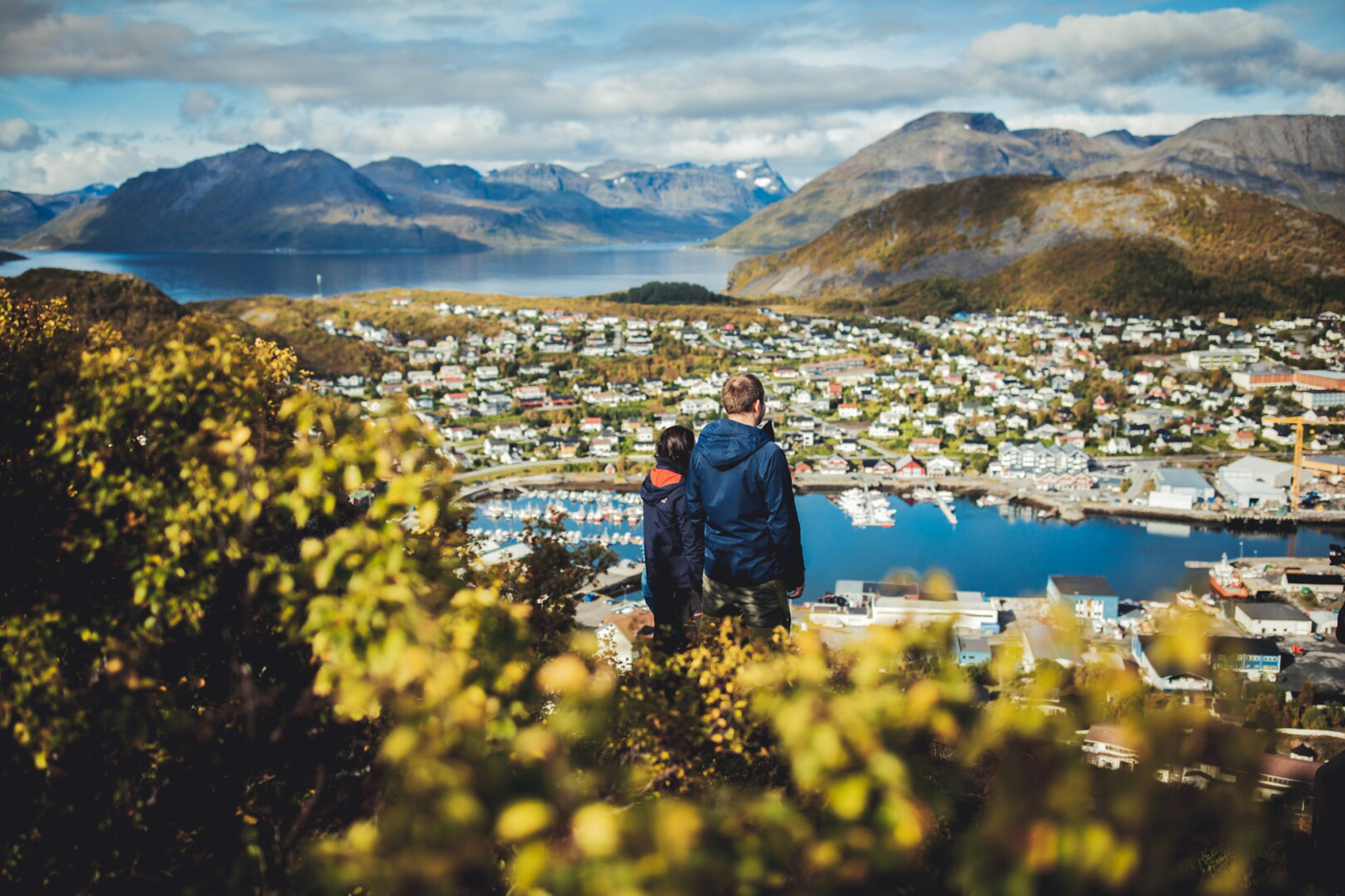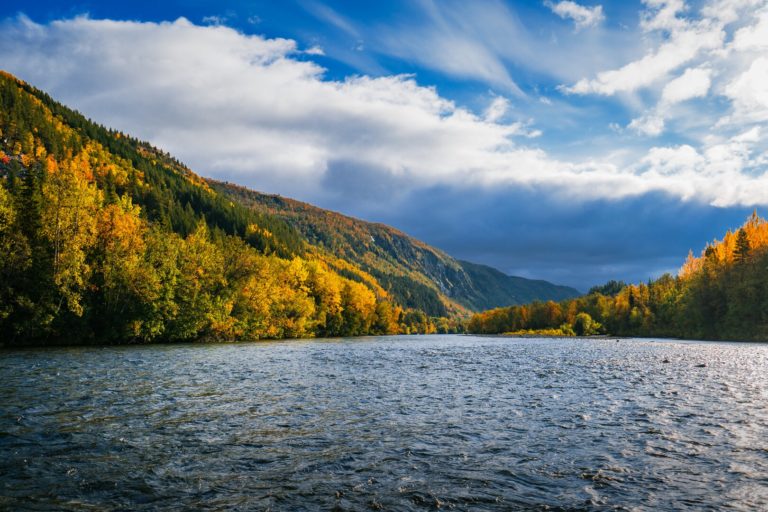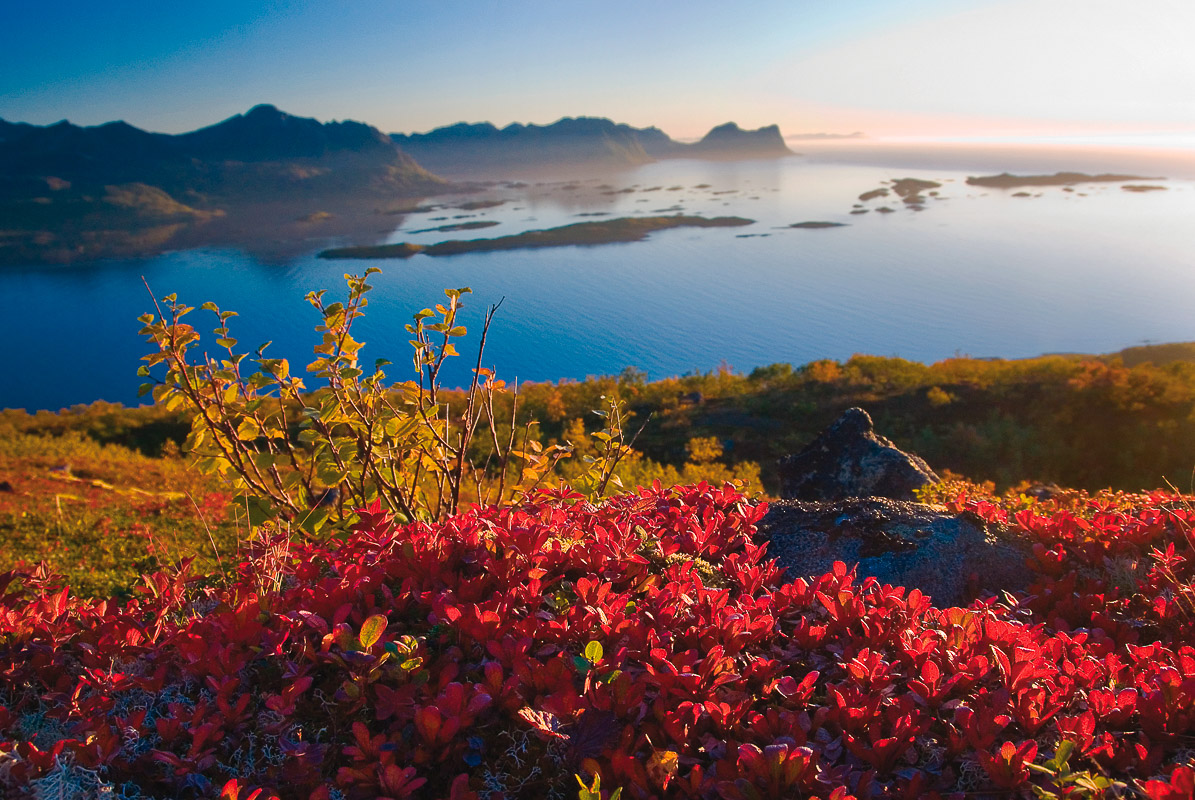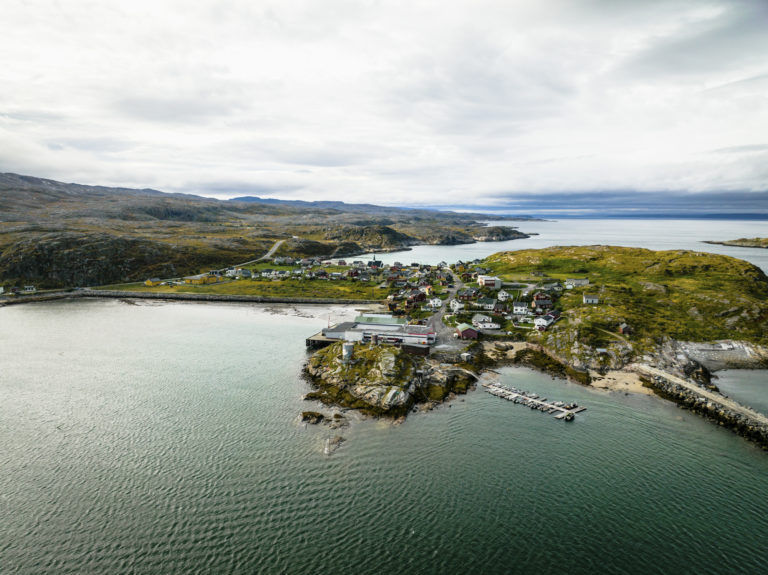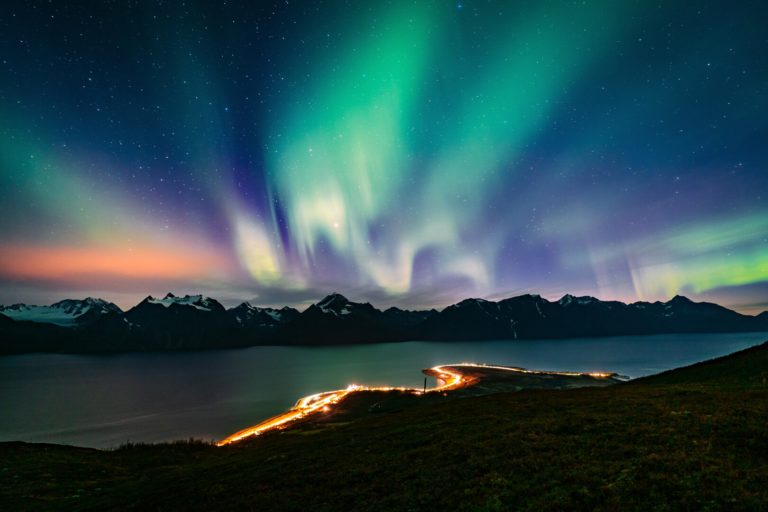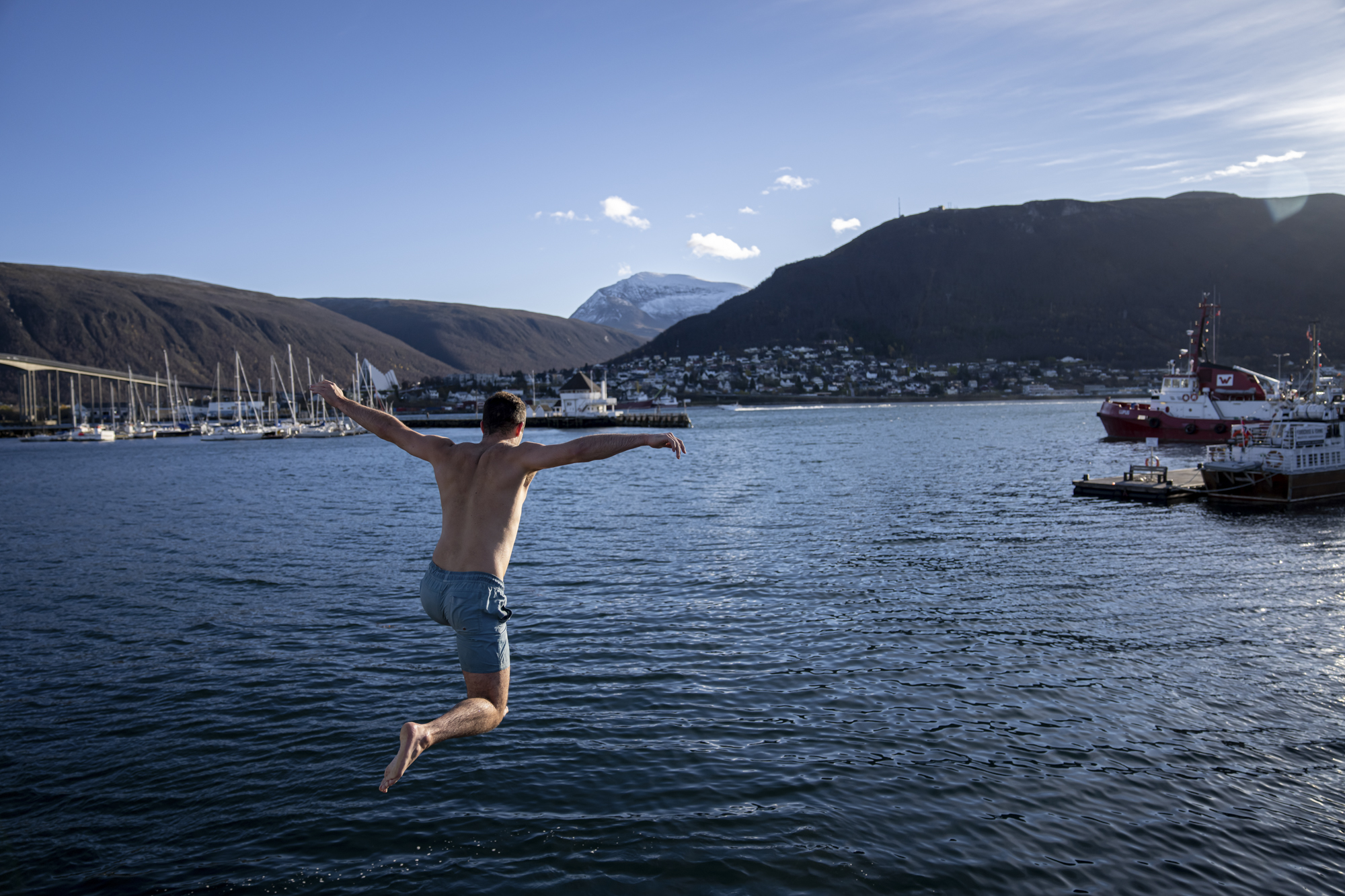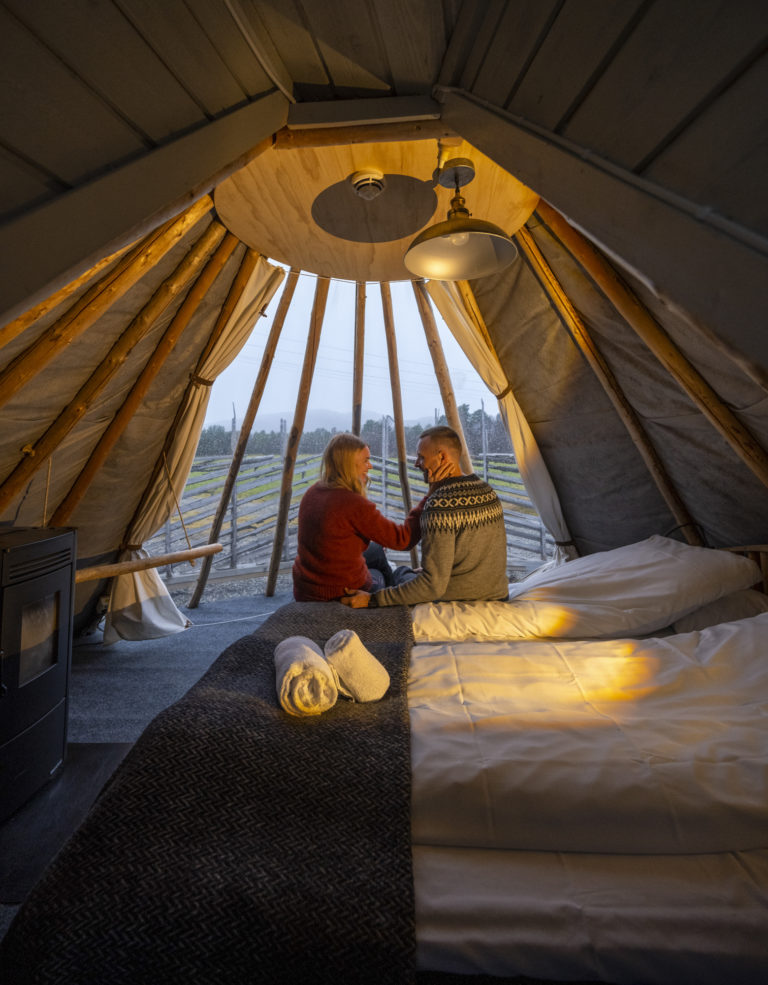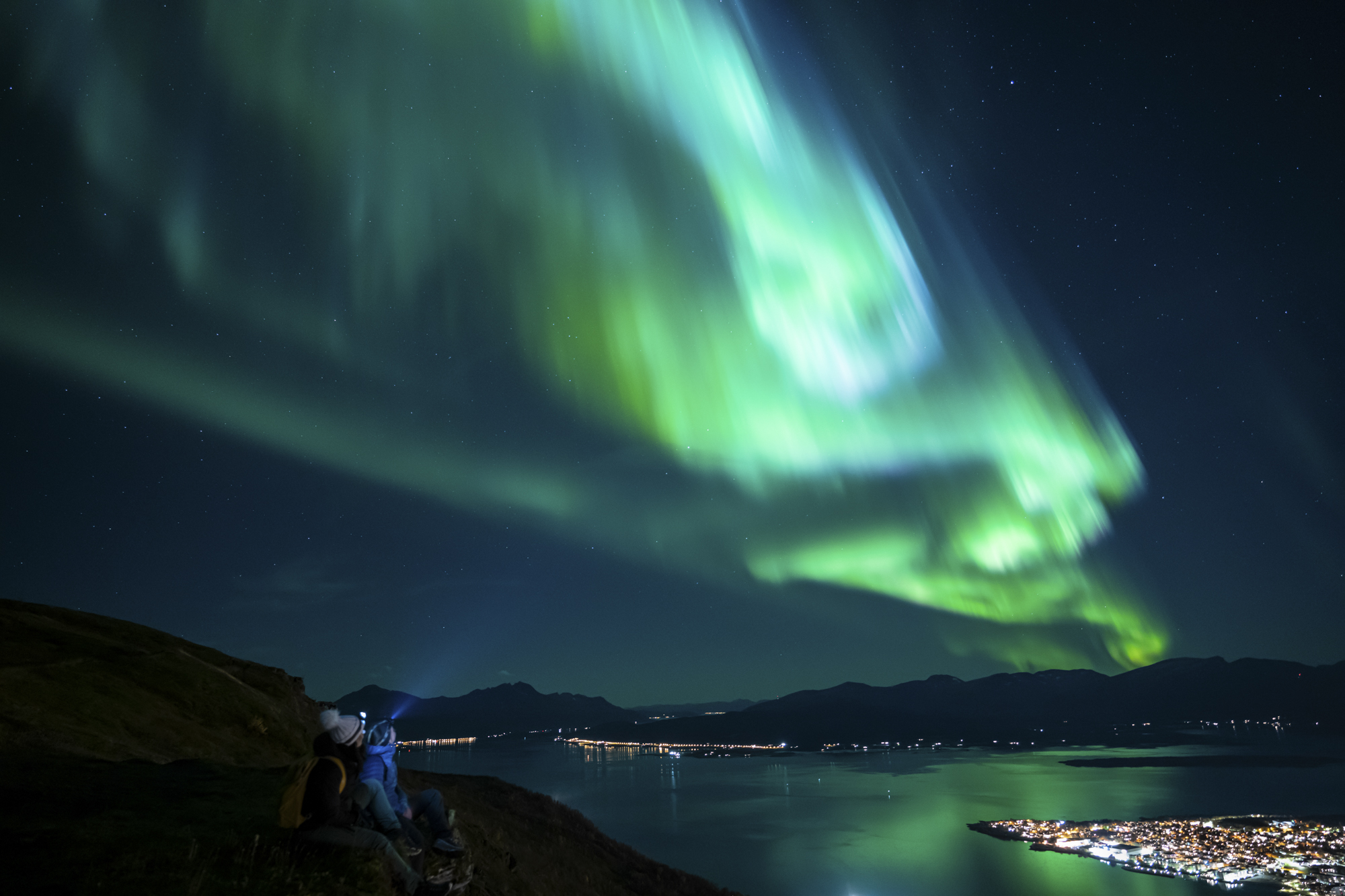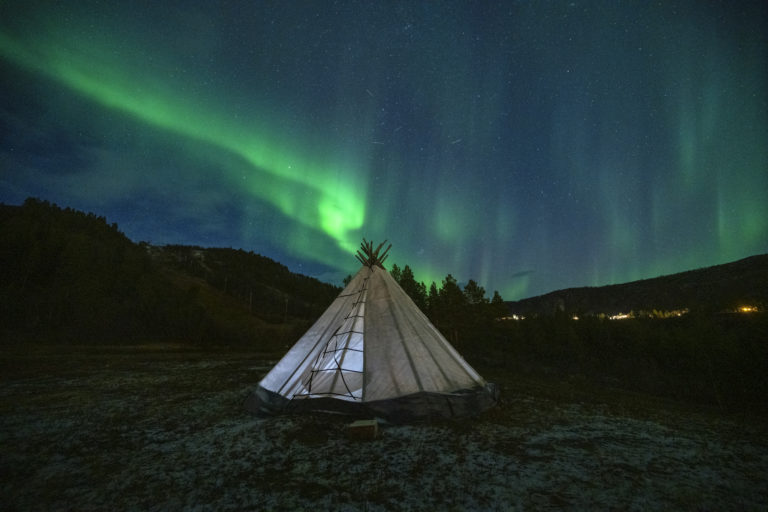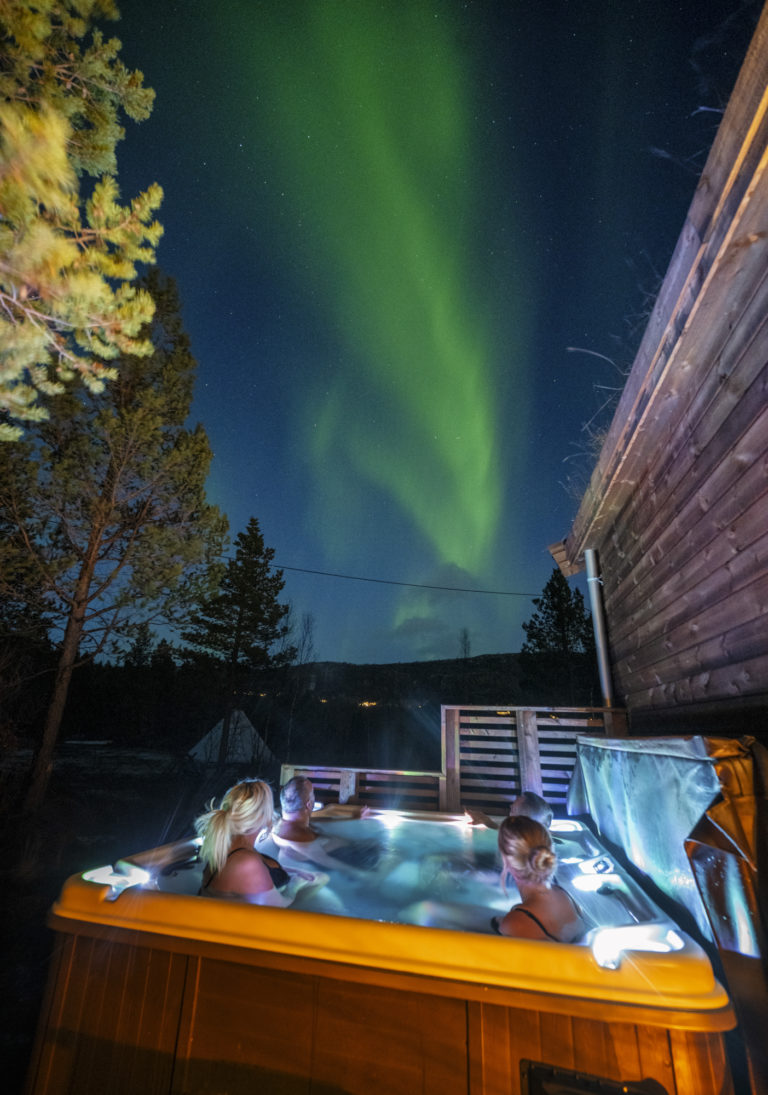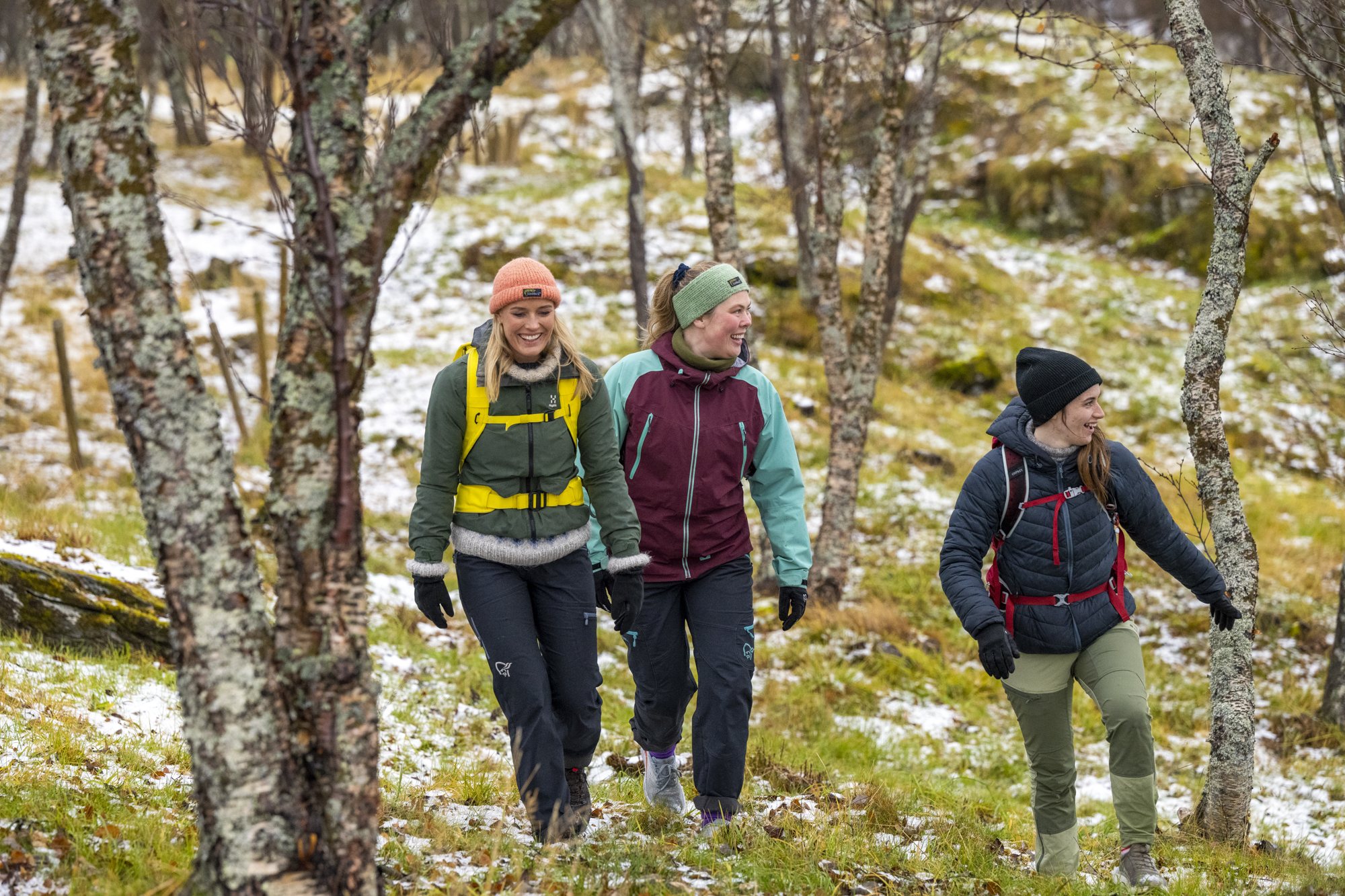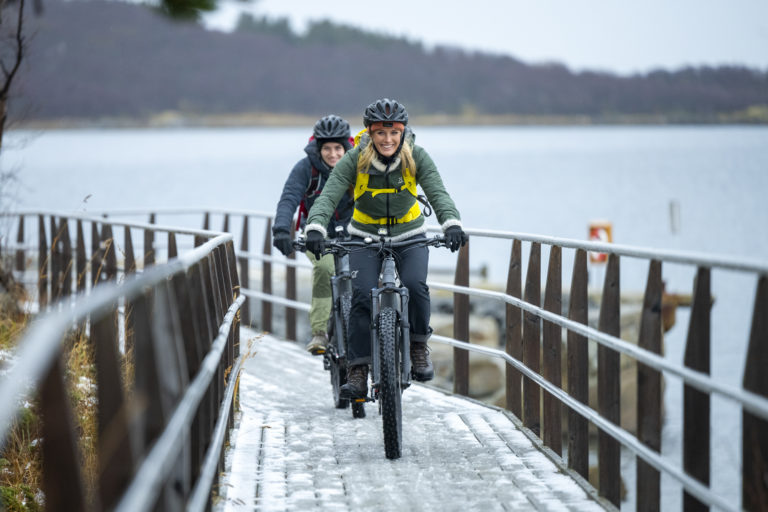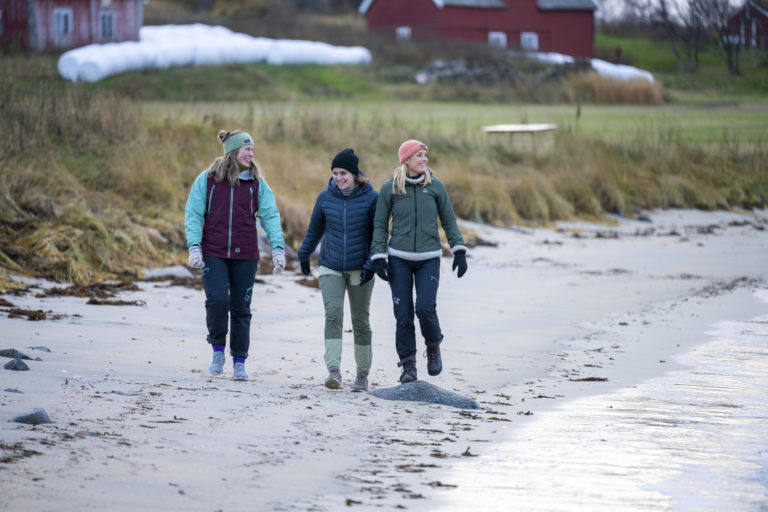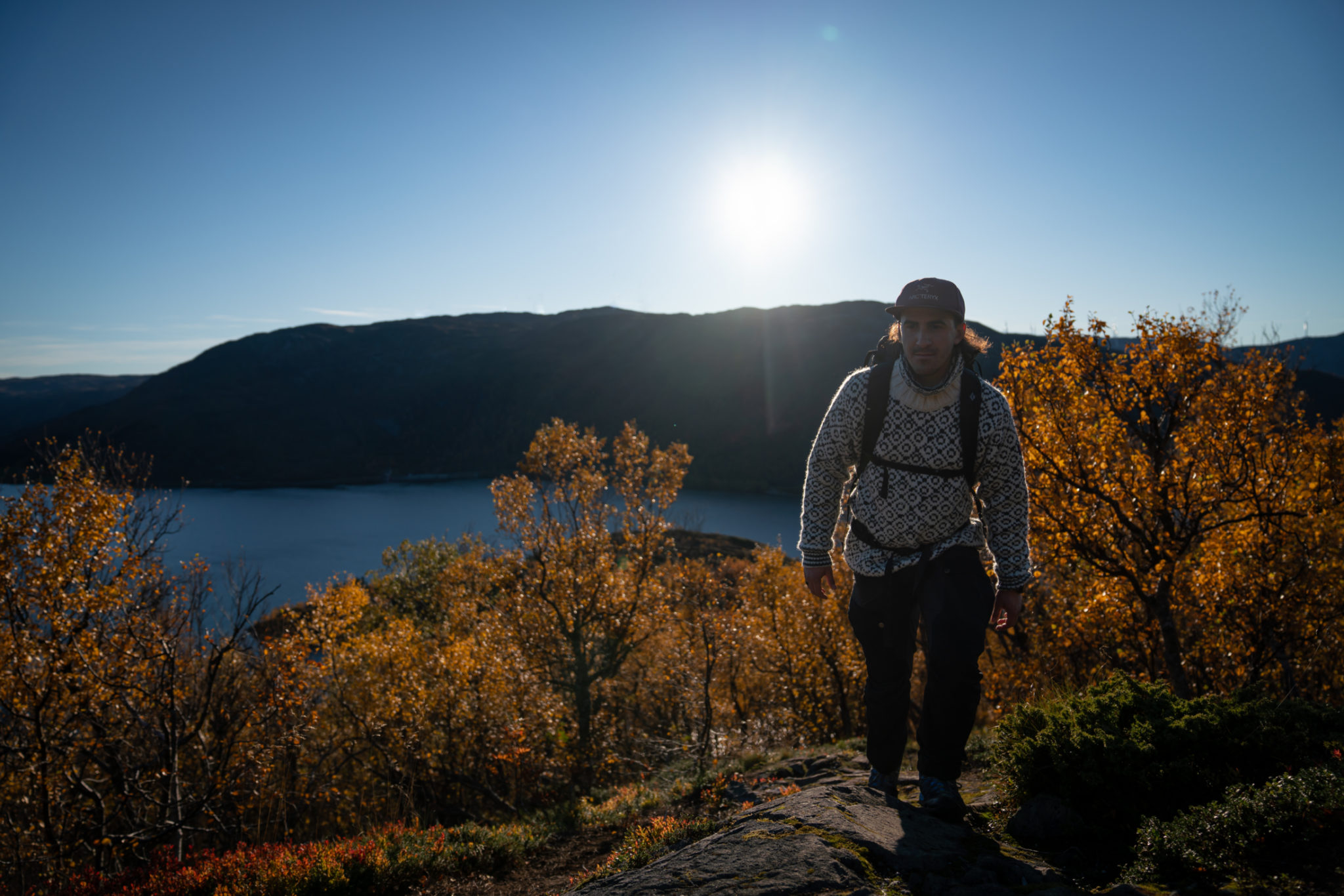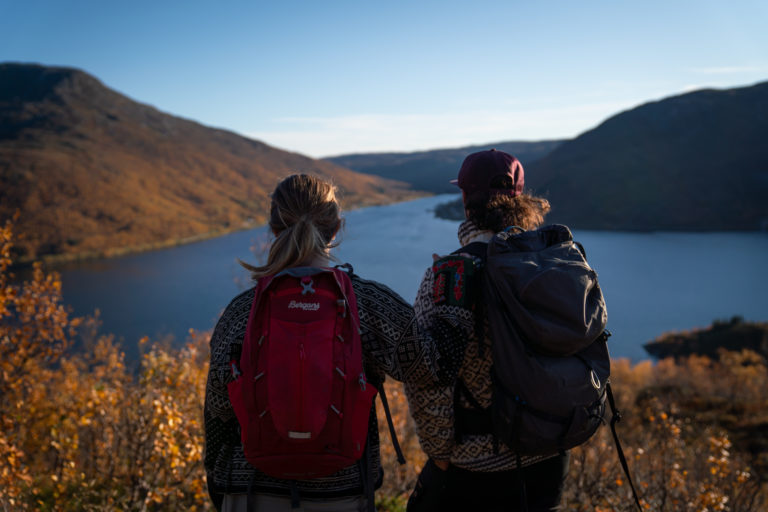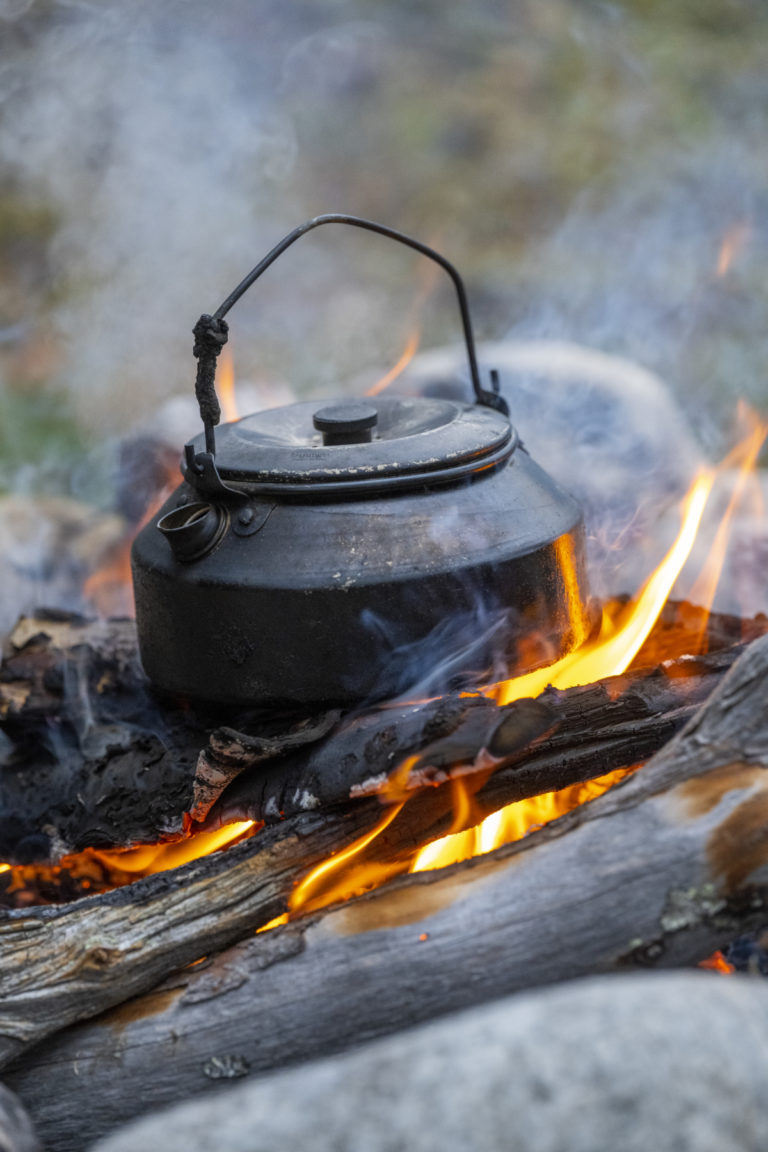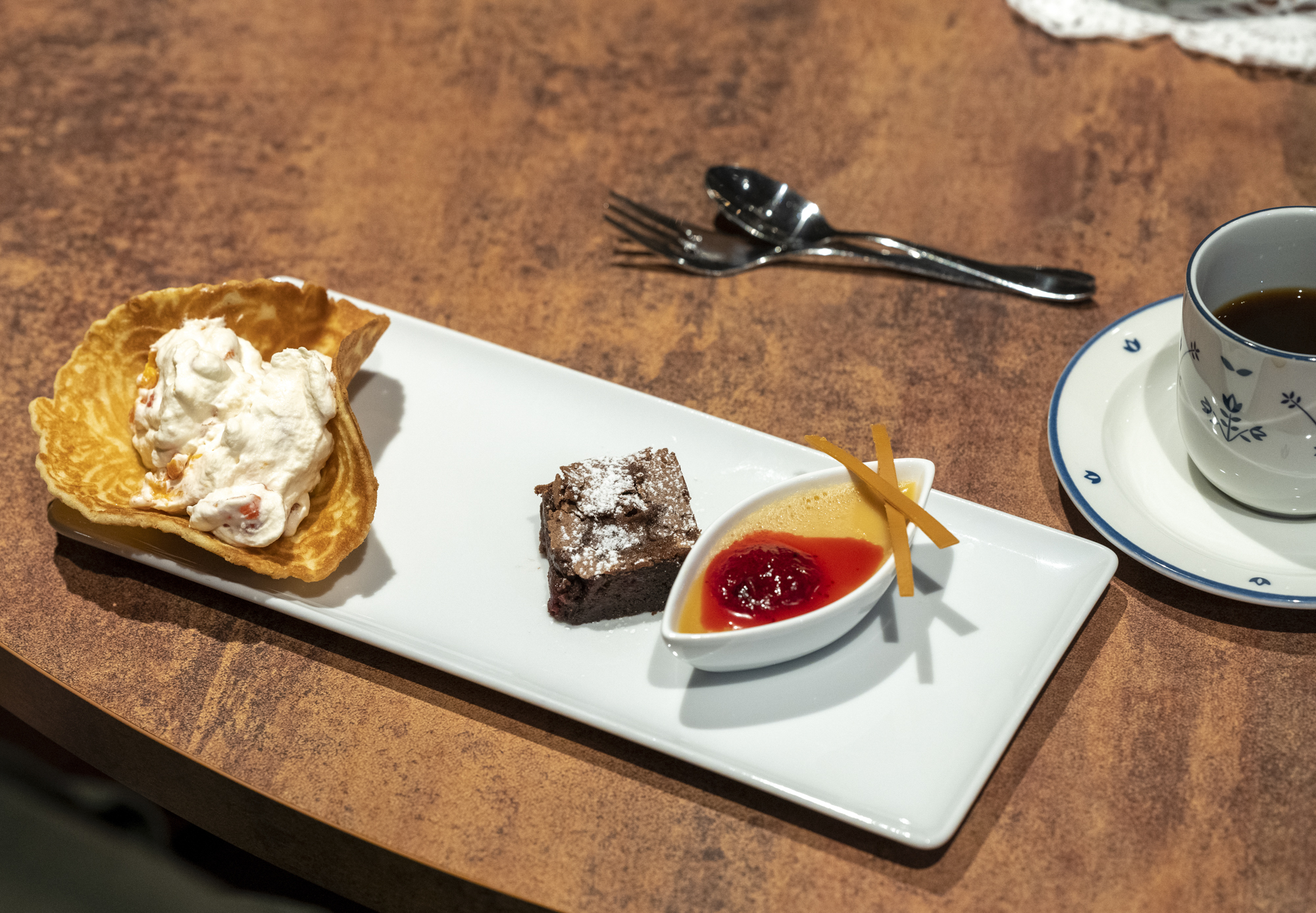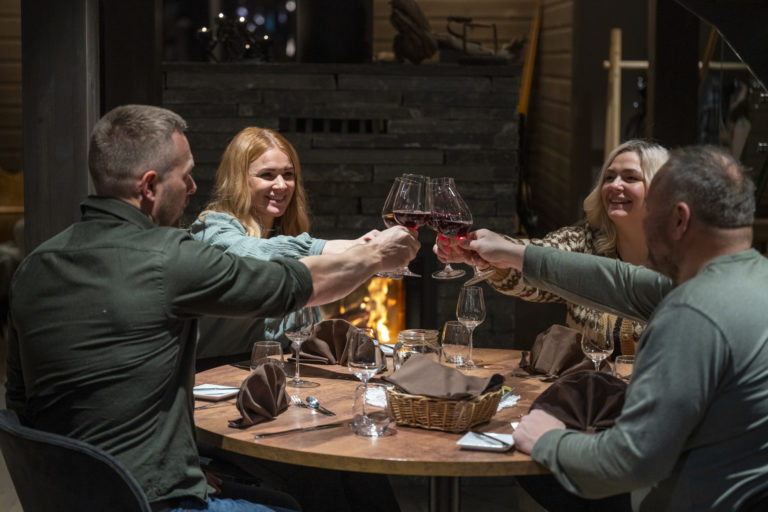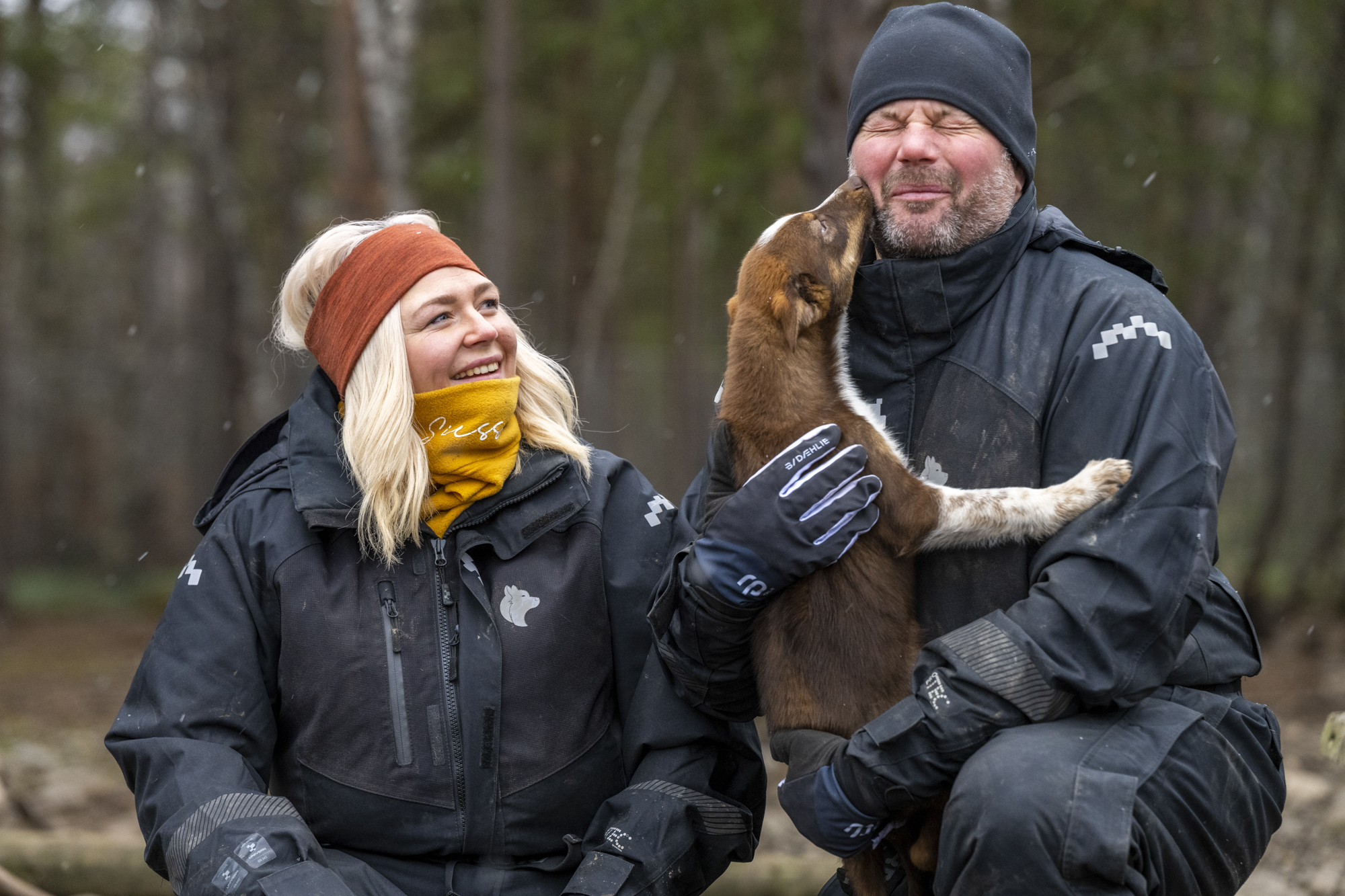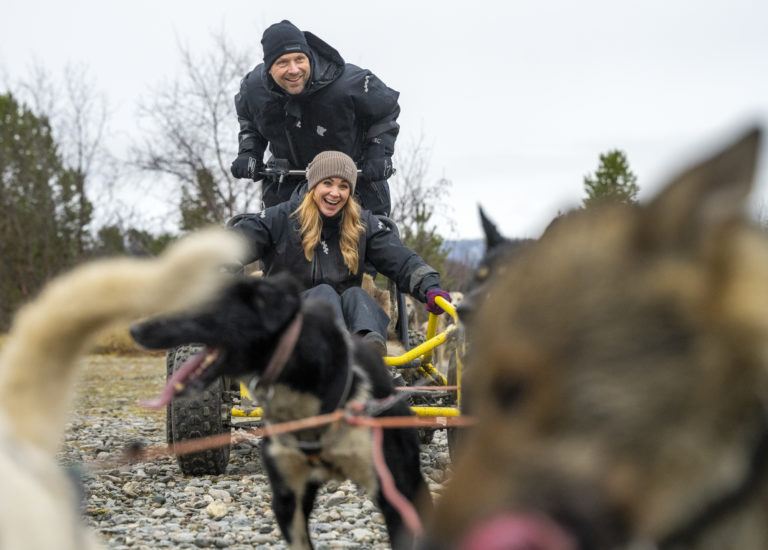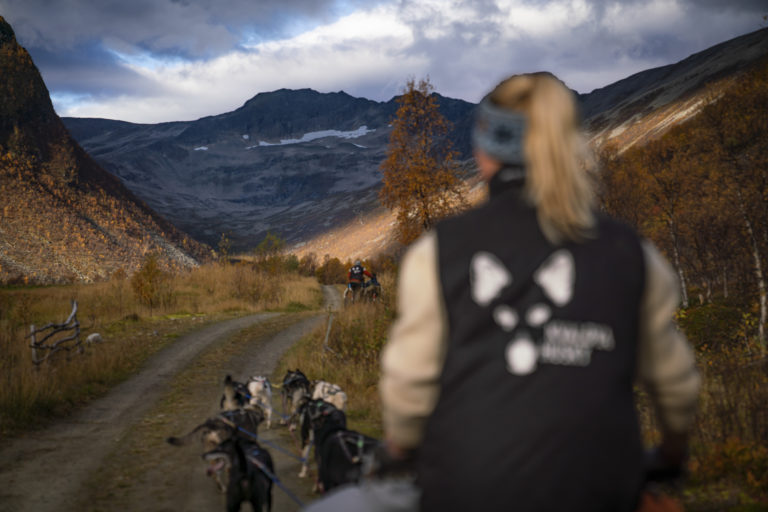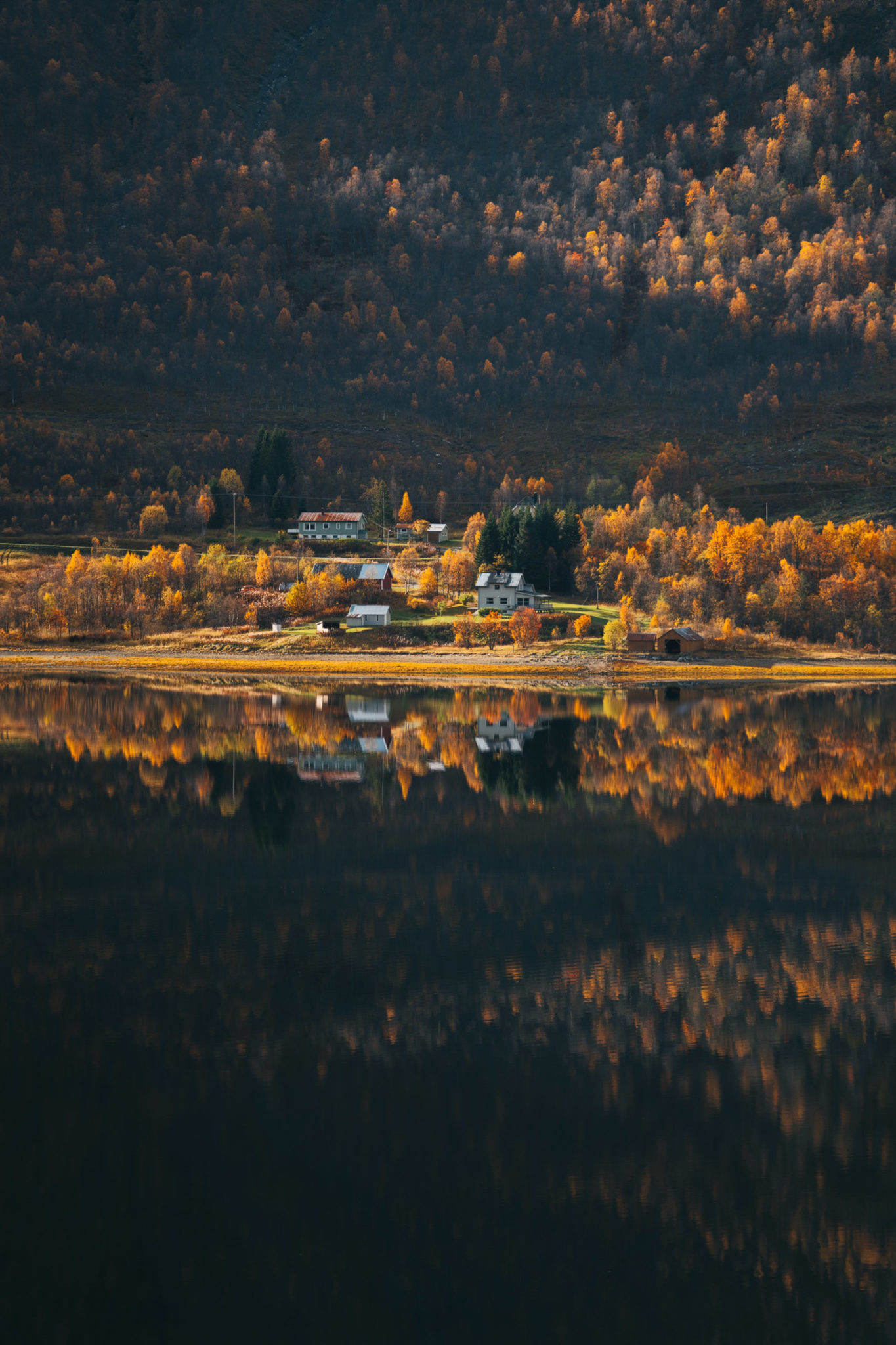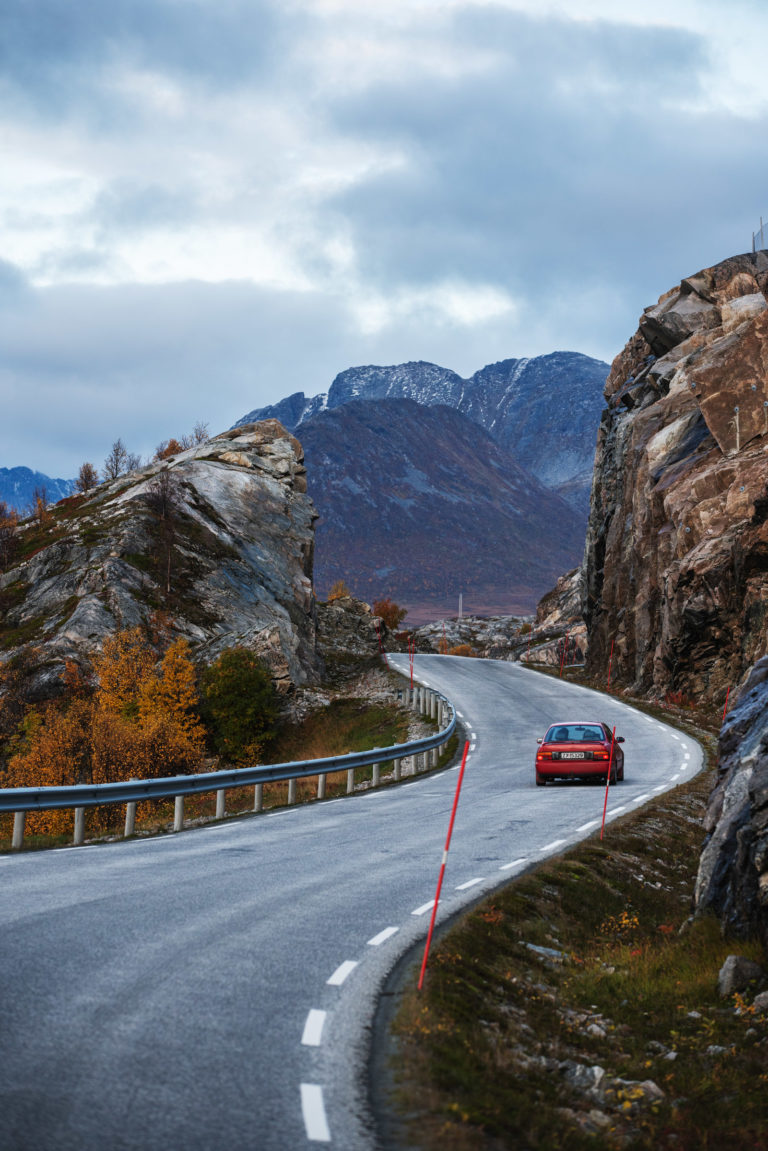Autumn is a time for hikes in wonderful autumn colours, for good food, for time together and by yourself and to see the Northern Lights make a grand entry.
Ask the locals across Northern Norway what their favourite season is. Surely it must be the midnight sun, period? Or maybe the bright, sunny end of winter, so full of promises? The ones we’ve asked, however, prefer the autumn, or fall.
Autumn is the best time to see far
After a buzzing, hectic summer, nature slows down in autumn. The crisp air bites your fingertips. Summer haze and biting bugs have all gone; from a viewpoint, you can see a long way. In streams and lakes, life has quietened, so the water is crystal clear, shining in the low light. Autumn is a time for horizons.
Autumn is the best time to sense
Autumn is decay: crumbling undergrowth, withering flowers, seeds ripening and falling to the ground. Aspens turn lemony yellow, birches become ochre, and rowans range from red through orange and yellow to a striking violet shade. Then, on a stormy night, it all blows away. We are left with dry straws blowing in the autumn wind. Leaves on the ground are strewn with crystals from the first frost. Rowan berries await the birds’ feast.
Autumn is the best time to look up
Timid at first, Aurora borealis makes her first small performances in August, striving to outdo the reds and golds of the sunset. By early September, Aurora can dance the night away for hours. Before the autumn equinox, the sun and the planet align harmoniously, opening doors for direct energy from the sun. Electric blue, baby pink, deep purple. The Northern Lights season is here, with more to come.
Autumn is the best time to put on your hiking shoes
The crisp autumn air invigorates. Paths lead into colorful forests, along clean and clear streams, up onto the moors and to impressive viewpoints. Those that allow you to see far, across clear lakes and fjords, to distant mountains or the endless horizon of the Atlantic. The sun sits lower, casting a golden hue over the landscape, or autumn rain drips off decaying vegetation. Take a deep breath and embrace it all.
Autumn is the best time to have two desserts
Autumn is abundance. Colder waters make shells and crabs firm yet succulent. On tussocks in dry areas, lingonberries ripen into a rich ruby colour. This year’s lambs have roamed herb-filled mountain pastures and heather all summer. The reindeer have enjoyed a lazy summer on the coast. It’s time to harvest succulent carrots, small yellow turnips, new potatoes, currants, and fragrant herbs from the garden. It all becomes a feast for the palate.
Autumn is the best time to be together
When you haven’t seen dusk and darkness for a while, you welcome it. All of a sudden, it’s time for that feeling of “kos”; lighting candles, placing comforting tidbits on the table, and simply being together. Around café tables, candles flicker, conversations pick up, and the mood is mellow. Time to talk. Thethe loud craziness of summer is no more.
Autumn is the best time to be alone
Autumn evenings are deep blue. Perhaps you feel a bit blue too. It’s perfectly fine to sink into the sofa, gaze at the moon and stars, or watch the rain streaming down your window. Summer has faded, winter and darkness lie ahead. Time to think. To reflect. Autumn signifies change.
Find your way through Autumn in Northern Norway
Autumn can be felt already at the end of August. There is a nip in the air and heather and moss start changing colours. The autumn colours are at their most intense in early September in the far northeast, and in the first days of October down below the Arctic Circle. In the far north, winter is there sometimes in early November. Down in the southwest of Northern Norway, you can have an Autumn feel until Christmas.
We all hope for sunny mild day with good visibility. When that happens, you can expect low nighttime temperatures, often involving frost. There is no hiding that it can rain heavily in autumn. In the northern part of Northern Norway, you can wake up to a layer of snow already in early September, but by mid day it usually has melted again. Stable snow for a few days can happen in October, but that usually doesn’t linger either. November can be a transitional period with snow, rain and good weather.
In Autumn, the snow has melted even on the highest peaks. The bugs are long gone, and the temperatures are cooler than they can be in July/August. The air is also clearer than in the summer haze, so you can see much further.
The early days of September usually have the longest days and the highest temperatures. However, all September is usually good. In October, the locals opt for shorter hikes.
It has to be dark to see the Northern Lights. In mid-August, the night is still very short, but you might be lucky. By late August – early September, the chances get bigger every night. By mid-September, all the evening hours with the biggest intensity are after dark, meaning you have excellent chances. In addition, the planet is better aligned with the sun around Autumn equinox, creating more frequent solar storm. All in all, the latter half of September and October is a good period to see the Northern Lights.
Go for a long walk! Bring a headlamp, walk up to the nearest hill, while you look around. Bring some warm coffee and maybe a tidbit. You can also walk along the beach. Try move to darker places, although the effect of light pollution tends to be exaggerated.
The Northern Lights are never guaranteed. But a solid cloud cover is a guarantee for NOT seeing the Northern Lights. A rental car can be a good idea, drive to the areas behind the next mountain, that might have clear skies. The professional Northern Lights chasers, however, are experts at this: They are experts at reading weather charts, and can find out where the chances of finding an opening in the cloud cover are the biggest.
Good weather is never guaranteed in Northern Norway. It can rain, it can snow in the night and we can have Autumn storms. Be ready for some lowland sightseeing of the weather is less than fantastic.
Autumn is when nights go longer and days go shorter. How much depends on the latitude and the calendar. On the 10th of September, the sun is up 13 hours and 53 minutes in Bodø, 14h07min in Tromsø, 14h19min on the North Cape and 15h52min in Longyearbyen/Svalbard. Past Autumn equinox, on October 10th, the sun is up 10hr09min in Bodø, 9h54min in Tromsø, 9hr42min on the North Cape and a mere 8hr7min in Longyearbyen. On November 10th, Bodø still has 6hr7min of sunlight, in Tromsø it’s down to 5h5min, and 4h9min on the North Cape. In Longyearbyen, the sun has already been under the horizon for a couple of weeks.

